 W
WAlbert Ball, was an English fighter pilot during the First World War. At the time of his death he was the United Kingdom's leading flying ace, with 44 victories, and remained its fourth-highest scorer behind Edward Mannock, James McCudden, and George McElroy.
 W
WLieutenant General Sir Edric Montague Bastyan, was a senior British Army officer, who became Governor of South Australia from 4 April 1961 until 1 June 1968 then Governor of Tasmania from 2 December 1968 until 30 November 1973. He was the last British person to be governor of either state.
 W
WBrigadier General John Harold Whitworth Becke, was an infantry officer in the Second Boer War and squadron, wing and brigade commander in the Royal Flying Corps during the First World War. He transferred to the Royal Air Force (RAF) on its creation on 1 April 1918 as a temporary brigadier general. He retired from the RAF in 1920.
 W
WHarry Churchill Beet VC was an English recipient of the Victoria Cross, the highest and most prestigious award for gallantry in the face of the enemy that can be awarded to British and Commonwealth forces.
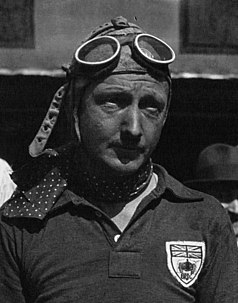 W
WSir Henry Ralph Stanley "Tim" Birkin, 3rd Baronet was a British racing driver, one of the "Bentley Boys" of the 1920s.
Robert Blood was an English footballer who played as a centre-forward and was noted for his powerful strikes.
 W
WLieutenant-Colonel Arthur William Lancelot Brewill was an architect based in Nottingham.
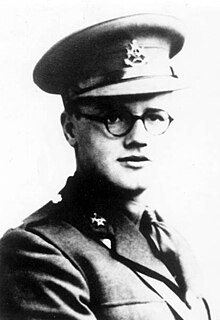 W
WCaptain John Henry Cound Brunt, was an English recipient of the Victoria Cross, the highest award for gallantry in the face of the enemy that can be awarded to British and Commonwealth forces.
 W
WCharles Murray Buchan was an English footballer, sporting journalist and commentator.
 W
WRichard Ford William Lambart, 7th Earl of Cavan, styled Viscount Kilcoursie from 1772 to 1778, was a British military commander throughout the Napoleonic era and beyond.
 W
WLieutenant-Colonel Lord Edward Cavendish MP was a 19th-century British politician, soldier, and nobleman.
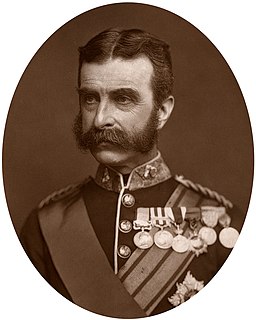 W
WFrederic Augustus Thesiger, 2nd Baron Chelmsford, was a British imperial general who came to prominence during the Anglo-Zulu War, when an expeditionary force under his command suffered one of the severest defeats in battle against native tribesmen in the history of the British Empire at the Battle of Isandlwana in 1879. He went on to defeat the Zulu Kingdom at the subsequent Battle of Ulundi.
 W
WGeneral Sir Garrett O'Moore Creagh, known as Sir O'Moore Creagh, was a senior British Army officer and an Irish recipient of the Victoria Cross, the highest award for gallantry in the face of the enemy that can be awarded to British and Commonwealth forces.
 W
WPhilip Hugh Dalbiac was a British army officer, publisher, author and Conservative Party politician.
 W
WGeneral Sir Ralph Darling, GCH was a British Army officer who served as Governor of New South Wales from 1825 to 1831. He is popularly described as a tyrant, accused of torturing prisoners and banning theatrical entertainment, but he also built new roads and extended the boundaries of the colony. Local geographical features named after him include the Darling River and Darling Harbour in Sydney.
 W
WGeneral Francis Dundas was a British general and acting governor of the Cape Colony between 1798 and 1803.
 W
WLieutenant-Colonel Henry Breedon Everard GCLM ICD DSO TD was a railway engineer and executive who briefly became the Acting President of Rhodesia during the U.D.I. period.
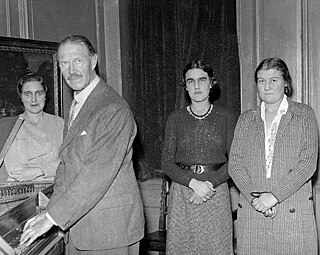 W
WMajor George Henry Benton Fletcher was a collector of early keyboard instruments including virginals, clavichords, harpsichords, spinets and early pianos. His collection is currently housed and kept in playing condition by the National Trust in Fenton House, a beautiful late 17th century merchant's house in, Hampstead, north London.
 W
WHoratio Lloyd Gates was a British-born soldier who served as a leading American general during the early years of the Revolutionary War. He took credit for the American victory in the Battles of Saratoga (1777) – a matter of contemporary and historical controversy – and was blamed for the defeat at the Battle of Camden in 1780. Gates has been described as "one of the Revolution's most controversial military figures" because of his role in the Conway Cabal, which attempted to discredit and replace General George Washington; the battle at Saratoga; and his actions during and after his defeat at Camden.
 W
WSir John Rankine Goody, was a British social anthropologist. He was a prominent lecturer at Cambridge University, and was William Wyse Professor of Social Anthropology from 1973 to 1984.
 W
WMark Hovell was a lecturer in history at the Victoria University of Manchester and the Workers Educational Association. He was an officer in The Sherwood Foresters during the First World War and was killed in action in only his second time in the trenches, after he fell down a shaft which had been used to explode a mine under the German lines. His book on Chartism, which he had begun before the war, was completed and published posthumously in 1918. It was one of the first scholarly works on the subject and one of the first to have been written by someone who was not a first-hand witness to events.
 W
WBrigadier Charles Edward Hudson, was a British Army officer and an English recipient of the Victoria Cross, the highest award for gallantry in the face of the enemy that can be awarded to British and Commonwealth forces.
 W
WAlfred Joseph Knight, was an English recipient of the Victoria Cross, the highest and most prestigious award for gallantry in the face of the enemy that can be awarded to British and Commonwealth forces. He was the only Post Office Rifleman ever to receive this award.
 W
WGeorge Lambton was a British thoroughbred racehorse trainer. He was British flat racing Champion Trainer in the 1906, 1911 and 1912 seasons.
 W
WBrigadier-General Charles Lawrence was a British military officer who, as lieutenant governor and subsequently governor of Nova Scotia, is perhaps best known for overseeing the Expulsion of the Acadians and settling the New England Planters in Nova Scotia. He was born in Plymouth, England, and died in Halifax, Nova Scotia. According to historian Elizabeth Griffiths, Lawrence was seen as a "competent", "efficient" officer with a "service record that had earned him fairly rapid promotion, a person of considerable administrative talent who was trusted by both Cornwallis and Hopson." He is buried in the crypt of St. Paul's Church (Halifax).
 W
WSir Charles Cameron Lees was a British military officer and colonial administrator.
 W
WMajor General Sir Richard Harman Luce, was a British surgeon, British Army officer and politician. During the First World War, he served as the Director of Medical Services of the Egyptian Expeditionary Force. He was elected MP for Derby in 1924.
 W
WCharles William Sydney Pierrepont, 4th Earl Manvers, VD, known as Viscount Newark from 1860 to 1900, was a British nobleman and Conservative Party politician.
 W
WLieutenant-General Sir William Raine Marshall was a British Army officer who in November 1917 succeeded Sir Frederick Stanley Maude as Commander-in-Chief of the British forces in Mesopotamia. He kept that position until the end of the First World War.
 W
WSir Charles Munro, 9th Baronet of Foulis was a Scottish Baronet and soldier. He was also chief of the Highland Clan Munro.
 W
WLieutenant General Sir Jasper Nicolls KCB was Commander-in-Chief, India.
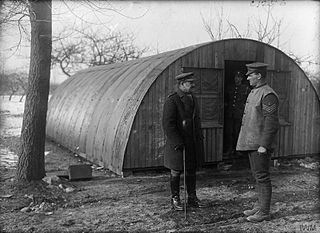 W
WPeter Norman Nissen, was a Canadian-American-British mining engineer, inventor and army officer. He held a number of patents for his inventions and developed the Nissen hut prefabricated shelter during the First World War.
 W
WMajor Francis Peirson was a British Army officer who was serving on Jersey, in the Channel Islands off the coast of France. He was killed in the Battle of Jersey, one of the last battles on British soil.
 W
WCaptain Henry Singleton Pennell VC was an English recipient of the Victoria Cross, the highest and most prestigious award for gallantry in the face of the enemy that can be awarded to British and Commonwealth forces.
 W
WLieutenant General Sir Frederick Charles Shaw was a British Army general who served in the Boer War and the First World War. He became Commander-in-Chief, Ireland, and retired in 1920.
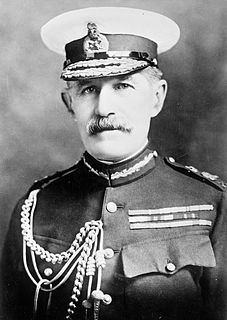 W
WGeneral Sir Horace Lockwood Smith-Dorrien, was a British Army General. One of the few British survivors of the Battle of Isandlwana as a young officer, he also distinguished himself in the Second Boer War.
 W
WGeneral Sir James Stuart Steele was a senior British Army officer who served as Adjutant-General to the Forces.
 W
WMajor-General Sir Alexander Murray Tulloch was a British soldier and a statistician.
 W
WLieutenant Colonel Bernard William Vann, was an English recipient of the Victoria Cross (VC), the highest and most prestigious award for gallantry in the face of the enemy that can be awarded to British and Commonwealth forces. Also an ordained priest, he was the only cleric of the Church of England to be awarded the VC in the First World War for his actions as a combatant.
 W
WSir (Charles) Geoffrey Vickers, VC was an English lawyer, administrator, writer and pioneering systems scientist. He had varied interests with roles at different times with the London Passenger Transport Board, Law Society, Medical Research Council and Mental Health Research Fund. In the later years he wrote and lectured on social systems analysis and the complex patterns of social organisation. The Sir Geoffrey Vickers Memorial Award has been presented by the International Society for the Systems Sciences since 1987 in his memory.
 W
WBrigadier Roderick "Rory" Muir Bamford Walker OBE MC was a British SAS Commander, best known for his heroism during the Oman Uprising and the Indonesian Confrontation. He is also well remembered as a skilled bagpipe player.
 W
WColonel Sir Henry Wilmot, 5th Baronet was an English recipient of the Victoria Cross, the highest and most prestigious award for gallantry in the face of the enemy that can be awarded to British and Commonwealth forces. He was also a Conservative Party politician.
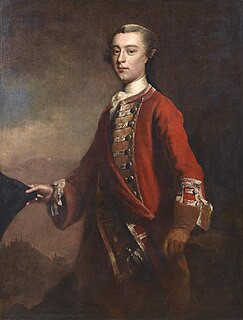 W
WJames Wolfe was a British Army officer known for his training reforms and remembered chiefly for his victory in 1759 over the French at the Battle of the Plains of Abraham in Quebec as a major general. The son of a distinguished general, Edward Wolfe, he received his first commission at a young age and saw extensive service in Europe where he fought during the War of the Austrian Succession. His service in Flanders and in Scotland, where he took part in the suppression of the Jacobite Rebellion, brought him to the attention of his superiors. The advancement of his career was halted by the Peace Treaty of 1748 and he spent much of the next eight years on garrison duty in the Scottish Highlands. Already a brigade major at the age of 18, he was a lieutenant-colonel by 23.